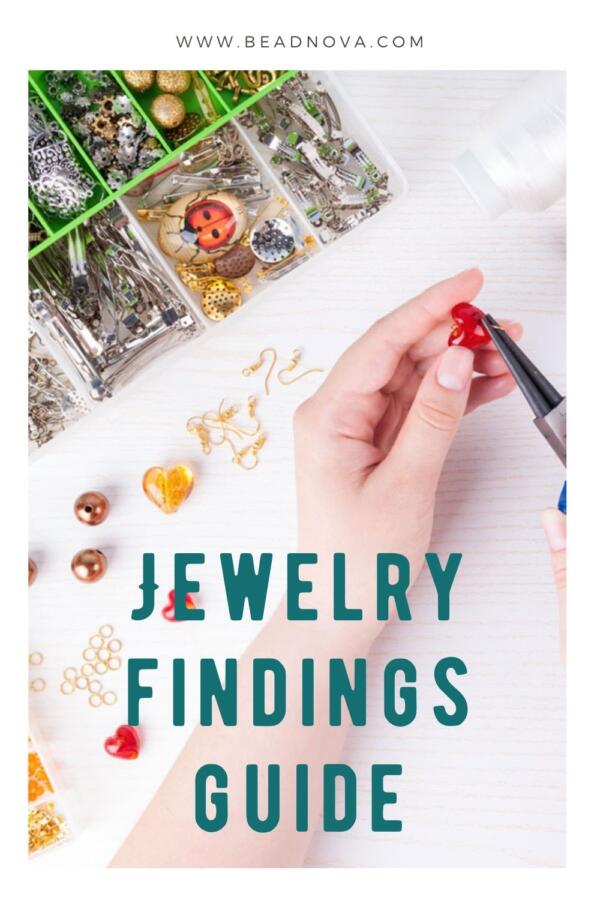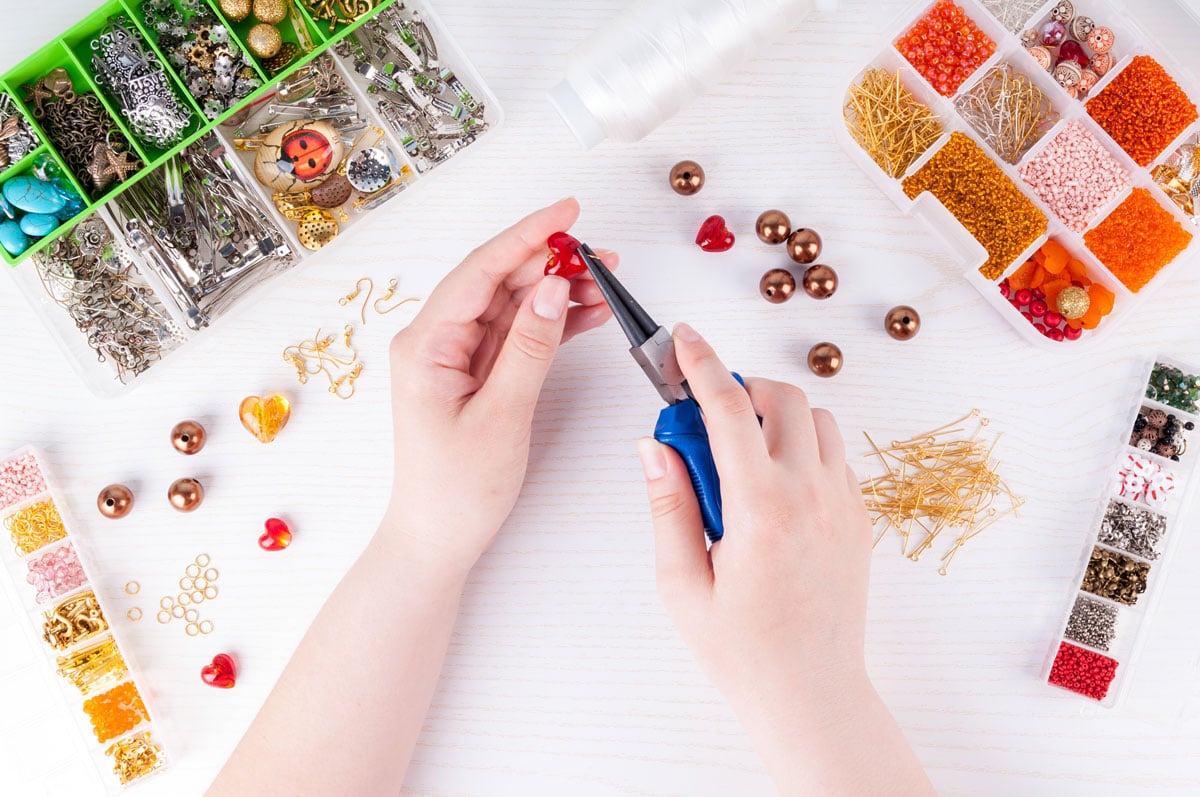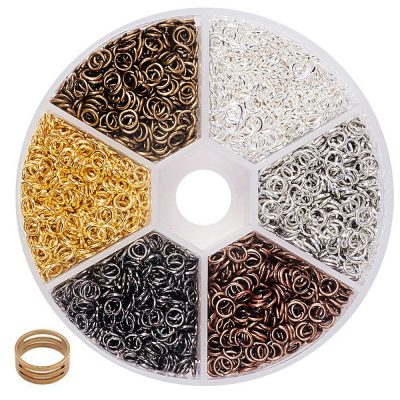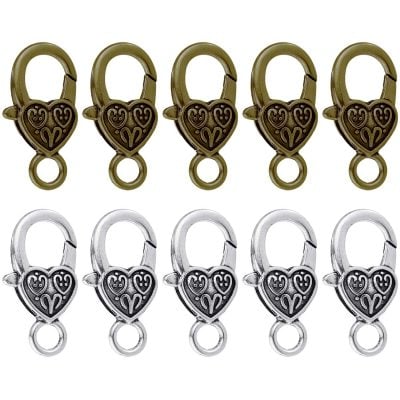Jewelry findings are a catch-all phrase for various jewelry parts that connect components to form a complete item. Simply put, their role is to join and keep different jewelry-making elements together firmly. Each type of jewelry findings has a particular purpose and functions uniquely, allowing you to perform a variety of techniques, create alternative looks, and change the way you wear your finished jewelry.
Several types of jewelry findings provide structure while also being quite visible. As a result, they are frequently available in numerous patterns and shapes to make the product even more appealing. Jewelry findings are often made of metal and are available in sterling silver, copper, brass, gold-plated, and silver-plated variations, among many others. To allow for project coordination, jewelry parts are typically colored, such as gold, rose gold, gunmetal, bronze, or antique silver.
Bead cap
Finishing findings such as bead caps are a form of finishing finding. You may quickly transform a basic bead into a focal element for a pendant by adding bead caps. Relatively from serving a functional purpose, these little metal caps are positioned on each side of a bead to enhance its appearance. Bead cap findings can be essential when dealing with beads. These finds are available in a wide selection of forms and elaborate designs, all with a focus on beauty. (Shop bead caps on Amazon)
Jump ring
Jump rings are structural components used in jewelry-making projects. These small wire rings connect pins, clasps, or fastenings to form a complete item. Because they feature a little break in the circular, you twist them open to attach another component, then turn them shut to secure. It’s vital to note that pulling the ring apart may cause it to become misshapen; instead, a simple twisting motion will be sufficient.
Open jump rings have a split in the center that allows jewelry pliers to open them. Closed jump rings are soldered all over, making them impossible to open. Nevertheless, closed jump rings are valuable when you require a robust connector for an expensive or hefty piece of jewelry.
Clasps
Jewelry clasps are necessary for securing your necklace and bracelet designs. Toggle clasps, screw fasteners, magnetic clasps, bolt rings, carabiner clasps, and hooks are some of the clasps available. Clasps must be fastened with the aid of jump rings. Clasps are used to open a piece of jewelry to put it on and then close it again to secure it. Drag it down to open the clasp and let go to close it. The loop at the end is permanently attached to the bracelet or necklace, while the other side of the clasp serves as a temporary fastener that allows you to wear the finished piece.
Crimps
Crimps are used to keep your beaded jewelry designs in place. These soft metal embellishments are typically bead-shaped, but they can also resemble tubes. The wire is simply looped through the crimp, through a clasp, and back through the crimp to construct a loop. Then, squeeze the crimps flat with snipe nose pliers to attach the end of necklaces or bracelets for a neat and professional finish. Crimp beads can be crushed onto jewelry wire to keep other beads in place. To secure the complete ensemble, the crimp bead is squished flat with pliers.
Link connectors
Link connectors include two loops on either side, making it simple to attach to other components of your jewelry creation, such as wire-wrapped beads or to the chain. Links connectors are available in a wide range of forms and shapes. You’re sure to find some in the perfect finish for whatever you’re working on. As the name implies, they are used to link jewelry components. For example, these could be used to make bracelets, earrings, or necklaces.
Bails
A bail is a typical jewelry setting that is used to secure a stone. Bails are used to connecting a focal bead or component to a chain to create a pendant. A bail is a simple way to attach a charm to a chain that does not involve metalsmithing or soldering procedures. These helpful small attachments are customarily connected to the bottom of your necklace where you want the pendant to hang down, indeed increasing your jewelry creation possibilities.
Headpins & eye pins
Headpins are essential for making dangly earrings, charm bracelets, and necklaces because they allow you to attach hanging ornaments. Headpins, like eye pins, join the ends of a chain of components rather than the center. If you want to make beaded designs like earring drops or charms, headpins are ideal. They are long pieces of wire with a flattened or shaped ball head on top that serves as a bead stopper. Side cutters can be used to trim headpins to fit your design.
Eye pins are necessary to fabricate decorative jewelry pieces such as dangly earrings and statement necklaces because they allow you to build a link to connect many hanging components. To attach an earring or other features, twist the eye open. Then, thread your beads onto the eye pin and either crimp the end to fasten it or make another loop at the other end to create a connection.
End caps
End caps are used to cover the ends of your thread of choice. These finds are frequently U-shaped or bell-shaped to manage the thickness of the material and are used to finish off string, leather, or ribbon while allowing you to attach them to clasps. There are several end cap varieties to pick from, including box-style end cords that you fold over to fasten, pinch-style end cords that you squeeze closed with snipe tip pliers, and end cords that you glue onto the end of your thread. After inserting the cord, the end cap is squeezed with pliers, and a clasp is connected to the top loop.
Knot covers
Knot covers, also known as bead tips, are ideal for a clean and professional design. The cover secures and conceals the knots at the end of your thread. Press down on the knot cover with snipe nose pliers to fix it in place, ready to add your desired clasp. Wire protectors strengthen jewelry stringing wire where it may be weak, such as around the clasp. Chain tabs are attached to the other side of a clasp to have something to connect to.
Find our jewelry findings to create your own jewelry.

More articles you may interest:
Wire Gauge Chart: A Comprehensive Wire Gauge Conversions To Millimeters and Inches
Tips For Homemade Jewelry To Beginners
The benefit of Leverback Earrings
What Are The Best Earring Backs?
How To Make Leather Cord Bracelets?
How to Make Leather Cord Necklace?






Leave A Comment